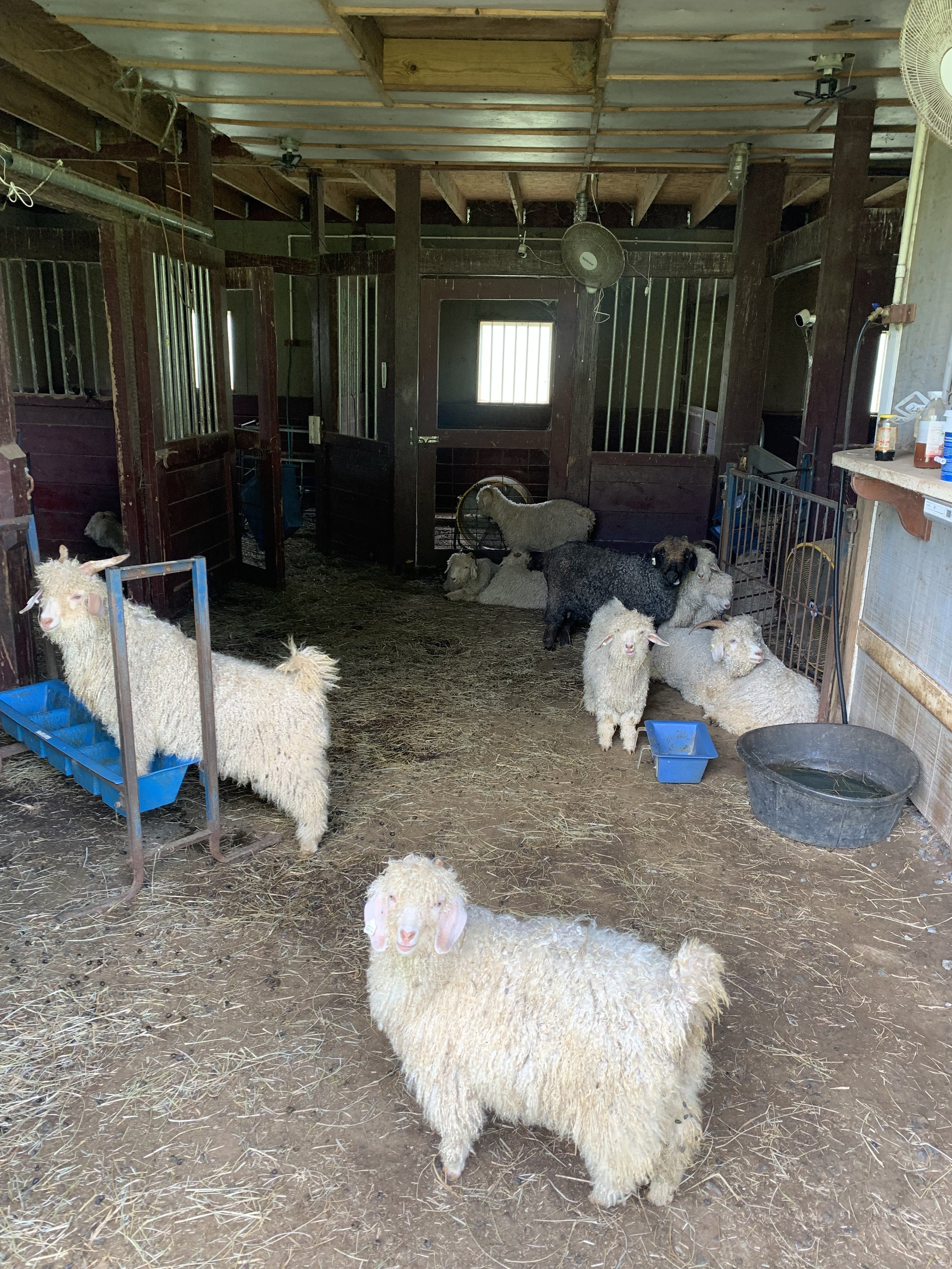Regarding the physical farm and animals, there are four unique challenges associated with the (hotter) summer months: pasture stewardship, parasite control, dealing with the heat, and shearing. These four activities all complement each other in the sense that doing one can help the others.
Regarding pasture stewardship, the good news is as we move from winter to spring to summer, the vegetation in the fields grows very fast. (As anyone with a lawn knows.) The bad news is - well really no bad news but the vegetation (here at Withers Wool mostly orchard grass) needs to be controlled by mowing as it produces seed heads during spring growth. Some potential benefits of mowing include: weed management, enhancing forage quality and reducing grazing patterns. After cutting, the orchard grass will then reproduce through its leafy and palatable regrowth - which is much more nutritious for the sheep and goats. This all means I need to mow the fields at least once to cut off the stalks/seeds. Finally, when I do mow, I do so the height of the vegetation is at least 6 inches - to assist with parasite management.
The number one parasite issue is control of what is commonly called the barber pole worm. This parasite lives in the soil and under the right conditions (hot, moist weather) can multiple very quickly. If enough of these parasites are ingested by the sheep and goats, they can become ill and even die. Research has shown that the parasite can only move up the stalks of vegetation 3 to 4 inches. So control consists of keeping the vegetation at six inches (or higher) where the animals graze, rotation throughout fields to let the parasite subside, and drenching, if necessary, to flush the parasite from the animal’s system. There are a few more points but this presents the main points of controlling the parasites. At the start of spring, I develop a plan of when the fields will be cut and how the sheep and goats will be rotated.
Shearing and dealing with the heat really go together. The sheep are sheared once a year, in April; the goats are sheared twice a year - in May and November. The sheep and goats will then start the summer months with little fleece - and thus not get as stressed as it heats up in summer. I assess how the conditions are affecting the animals based on the temperature, humidity and wind. My rule of thumb is when it is 90 degrees or more, I usually consider it “hot” and stressful to the animals. As you may have seen on my social media posts, when it is “hot”, the sheep and goats have access to fans. (And they always have access to cool water and shade.) When it climbs to the mid 90s, the animals essentially stay in front of the fans from late morning until early evening and I provide them plenty of hay to eat.
Perhaps too much info and I did not mention everything I do and consider - but this should get the basic story across of dealing with summer conditions. BTW, the chickens and peacocks are much easier to deal with. They are not stressed as much by the heat and basically need shade and water and also like an area that has loose dirt to take dust baths.
Goats Enjoying the Fans

